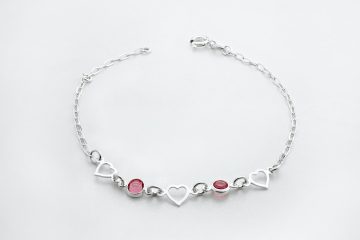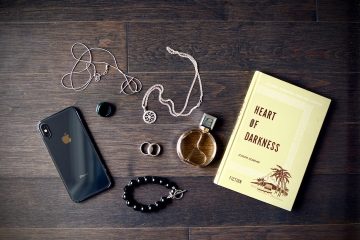Understanding the Average Bracelet Circumference: A Comprehensive Guide
*Introduction*
Bracelets have been worn for centuries as a form of personal adornment and self-expression. They come in various styles, materials, and sizes, but one crucial aspect to consider when purchasing a bracelet is its circumference. The bracelet circumference determines whether it will fit comfortably on your wrist or be too tight or loose. In this comprehensive guide, we will delve into the world of bracelet circumferences, exploring the average sizes, how to measure your wrist, and factors to consider when choosing the perfect bracelet size.
1. The Importance of Finding the Right Bracelet Circumference
Finding the right bracelet circumference is crucial for comfort and style. A bracelet that is too tight can be uncomfortable, restrict blood flow, and leave indents on your skin. On the other hand, a bracelet that is too loose may slip off your wrist or feel cumbersome. By understanding average bracelet circumferences and measuring your wrist accurately, you can ensure a perfect fit that enhances your overall look.
2. Measuring Your Wrist: A Step-by-Step Guide
Before purchasing a bracelet, it’s essential to measure your wrist accurately. Here’s a simple step-by-step guide to help you measure your wrist circumference:
Step 1: Gather the necessary tools. You’ll need a flexible measuring tape or a piece of string and a ruler.
Step 2: Wrap the measuring tape or string around your wrist at the widest part, just below the wrist bone. Ensure that it fits snugly but not too tightly.
Step 3: If you’re using a string, mark the point where the string overlaps and measure the length with a ruler. If you’re using a measuring tape, simply read the measurement.
Step 4: Record the measurement in inches or centimeters, depending on the unit of measurement used.
3. Understanding Average Bracelet Circumferences
Bracelet sizes can vary depending on the style, design, and target audience. However, there are some average bracelet circumferences that can serve as a guideline when choosing the right size. Let’s explore these average sizes:
* Small: A small bracelet typically has a circumference of around 6 to 6.5 inches (15-16.5 cm). This size is suitable for individuals with petite wrists or those who prefer a snug fit.
* Medium: A medium-sized bracelet usually measures between 6.5 and 7 inches (16.5-18 cm). This size is the most common and fits the average wrist comfortably.
* Large: A large bracelet generally has a circumference of 7 to 8 inches (18-20 cm). This size is suitable for individuals with larger wrists or those who prefer a looser fit.
4. Factors to Consider When Choosing the Right Bracelet Circumference
While the average bracelet circumferences provide a useful starting point, there are additional factors to consider when selecting the perfect size. These factors include:
* Style and Design: The style and design of the bracelet can affect how it fits on your wrist. For example, a bracelet with larger beads or charms may require a slightly larger size to accommodate the extra bulk.
* Closure Type: Different closure types can impact the fit of a bracelet. A bracelet with a clasp or toggle closure may need to be slightly longer to allow for easy fastening, while stretchy bracelets can be more forgiving in terms of size.
* Personal Preference: Ultimately, personal preference plays a significant role in choosing the right bracelet circumference. Some individuals prefer a snug fit, while others enjoy a looser feel. Consider how you like your bracelets to fit and adjust the size accordingly.
5. Adjusting Bracelet Sizes
If you find a bracelet you love but it doesn’t match your wrist measurement exactly, don’t worry. Many bracelets can be adjusted to fit your wrist more comfortably. Here are a few common ways to adjust bracelet sizes:
* Extender Chains: Some bracelets come with extender chains, allowing you to increase the circumference by an inch or two. This can be particularly useful if you’re unsure about your exact size or want the flexibility to wear the bracelet at different lengths.
* Jeweler Adjustment: If the bracelet cannot be adjusted using an extender chain, a jeweler can often resize it for you. They can add or remove links or beads, ensuring a perfect fit.
* Elastic or Stretchy Bracelets: Stretchy bracelets made with elastic materials can accommodate a range of wrist sizes. These bracelets are particularly versatile and can be an excellent option if you’re unsure about your exact size.
Conclusion
Finding the right bracelet circumference is essential for both comfort and style. By understanding average bracelet sizes, measuring your wrist accurately, and considering various factors such as style and personal preference, you can select the perfect bracelet size. Remember that adjustable bracelets and the assistance of a jeweler can help tailor the fit to your exact needs. With the right bracelet circumference, you can enhance your overall look and enjoy the perfect accessory for any occasion.
FAQs
Q1: Can I use an average bracelet circumference as a gift for someone?
A1: While average bracelet circumferences can serve as a useful guideline, it’s always best to measure the recipient’s wrist to ensure a perfect fit. People have different wrist sizes and may prefer a snug or loose fit, so measuring their wrist will help you choose the right size for them.
Q2: Can I adjust the size of a bracelet myself?
A2: While some bracelets come with adjustable features like extender chains, it’s generally recommended to have a professional jeweler make any size adjustments. They have the necessary tools and expertise to resize the bracelet without damaging its integrity.
Q3: What if my wrist measurement falls between two average sizes?
A3: If your wrist measurement falls between two average sizes, consider your personal preference and the bracelet’s style. If you prefer a snug fit, opt for the smaller size. If you prefer a looser fit or the bracelet has larger beads or charms, choose the larger size.
Q4: Can I wear multiple bracelets together?
A4: Absolutely! Layering bracelets is a popular trend, allowing you to mix and match different styles, materials, and sizes. When layering, consider varying bracelet widths and textures to create a visually appealing and balanced look.
Q5: Can I measure my wrist using a piece of paper or fabric tape measure?
A5: While a piece of paper or fabric tape measure may work in a pinch, it’s best to use a flexible measuring tape or string for accurate results. These tools conform to the shape of your wrist, ensuring a more precise measurement.




